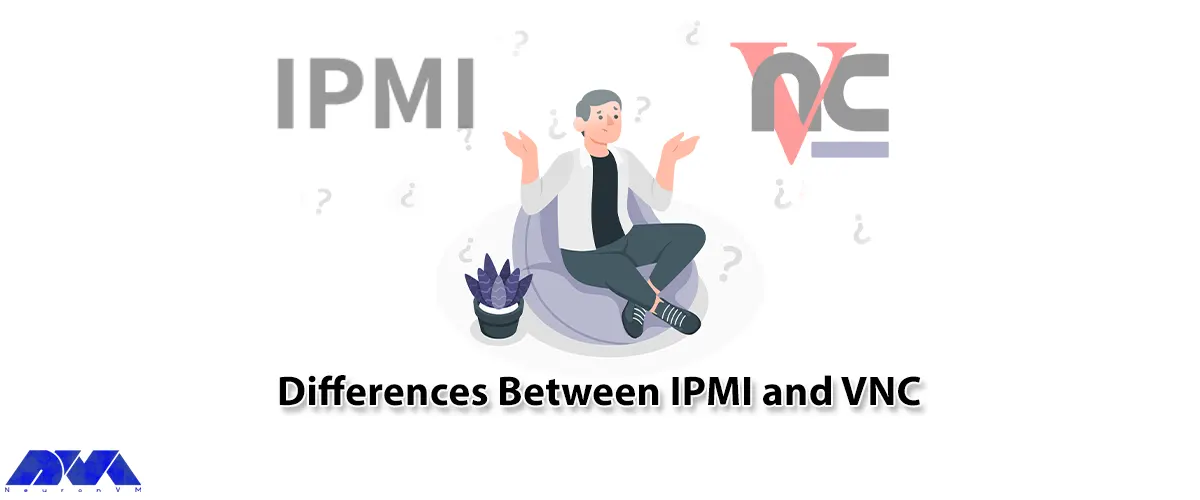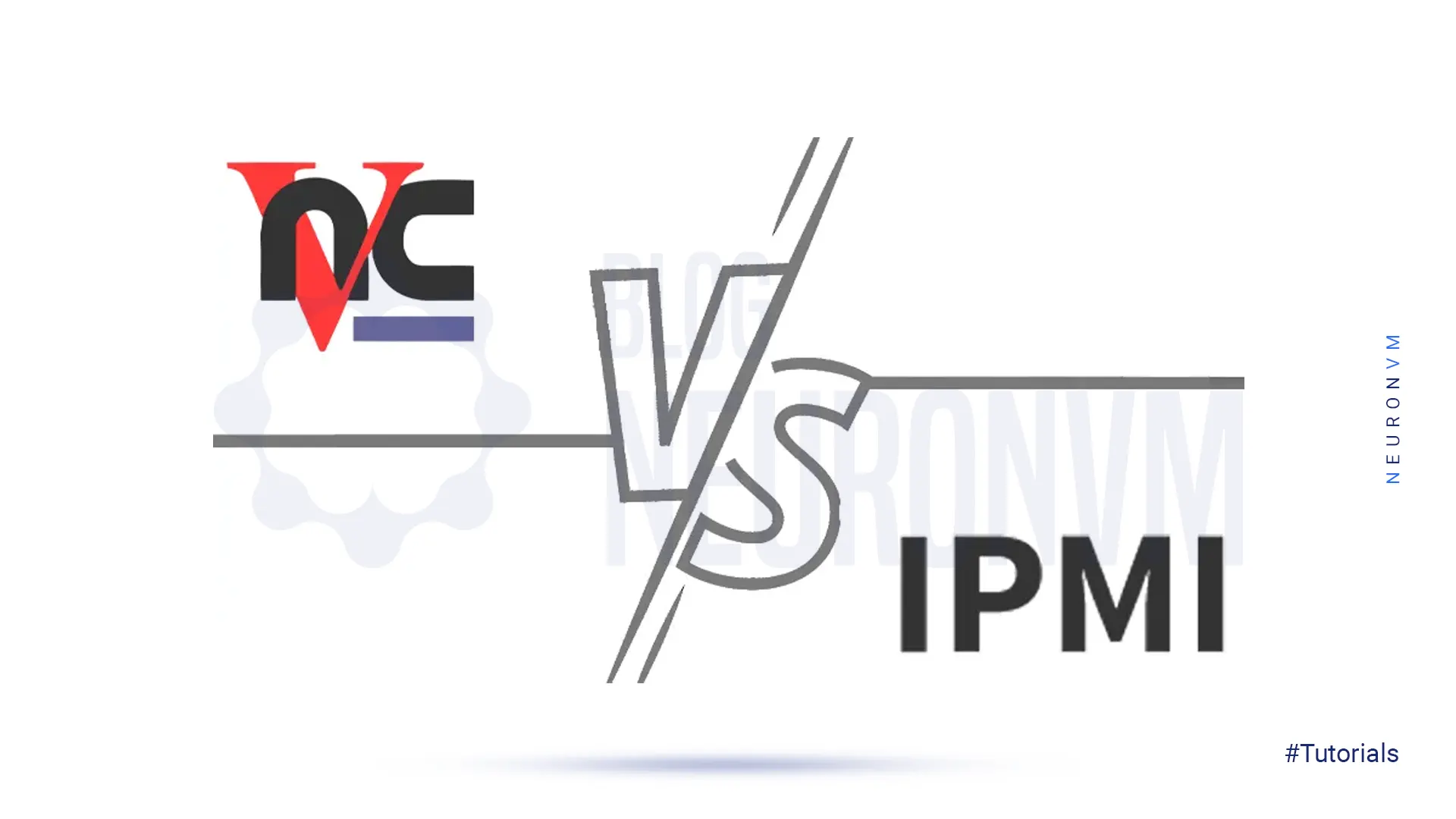






Sometimes the question may arise for you, what are the differences between IPMI and VNC? IPMI is a hardware component that grants Console Access to the dedicated server, while VNC is a Linux-based platform that runs on an operating system. This article will explain the differences between IPMI and VNC. If you want to buy a dedicated server, we suggest you use the various plans offered on our website. You can see IPMI access on these servers.
In this article, we will fully introduce you to IPMI and VNC and the features of each of them. Therefore, we ask you to accompany us until the end of this post.

IPMI stands for Intelligent Platform Management Interface and is a hardware solution for controlling and managing your servers.
It grants console access to the server to monitor and manage all server hardware and firmware features.
Hardware vendors and developers accept IPMI as a standard monitoring interface, which has made it popular.
VNC stands for Virtual Network Computing, a graphical desktop sharing system that uses the Remote Frame Buffer protocol to remotely control another computer and is a technology for remote desktop sharing.
It transmits all your keyboard and mouse movements from the thin client computer to the other large client computer and works like this.
Now let’s list the common features of VNC and IPMI.

1) IPMI Memory
2) Baseboard Management Controller
3) Communications Interfaces
4) Intelligent Chassis Management Bus
5) Intelligent Platform Management Bus
6) Authentication Features

1) Intuitive remote control
2) Tried and tested performance
3) Cross-platform support
4) Attended and unattended access
5) Direct and cloud connectivity
6) Pre-install or connect on demand
7) File transfer, printing, and chat
8) Multilingual support
9) Online team management
VNC works in a client/server model and uses a specialized network protocol called Remote Frame Buffer (RFB). The RFB protocol, although encrypting passwords, can still be vulnerable to determined adversaries who may uncover passwords through network weaknesses. Fortunately, many modern VNC implementations have addressed this issue by adding encryption to safeguard the entire VNC connection. It’s best to check the VNC program you’re using to make sure it provides an acceptable level of security.
But to secure IPMI, prevent unauthorized access, and protect critical data, you must restrict it to private management networks only. If IPMI is not in use or cannot be disabled on your device, block its MAC address to restrict access to the virtual local access network (VLAN).
In this step, we will compare how VNC and IPMI work.
| Features | VNC | IPMI |
|---|---|---|
| Access method | Remote desktop access | Remote server management |
| Functionality | Limited control over server operations | Full control over server operations |
| Security | Less secure as data is transferred unencrypted | More secure as data is encrypted during transfers |
| Compatibility | Works with a wide range of operating systems and devices | Designed specifically for server management and may have limited compatibility |
| Performance | Can be slower due to network bandwidth limitations | Typically optimized for fast performance |
| Cost | Often requires additional software or services | Typically included with server hardware |
VNC uses a specialized network protocol called Remote Frame Buffer (RFB). This protocol is used to transfer screen pixel data from one computer to another over a network and send control events in return.
You’ll need a VNC server for the remote computer you want to control, and a VNC viewer for the device you want to control from. VNC Server captures the computer’s desktop in real-time and sends it to VNC Viewer for display. But VNC Viewer collects your input (mouse, keyboard, or touch) and sends it to the VNC server to inject and actually achieve remote control.
You can connect to IPMI via LAN or the Internet. IPMI uses an IP to connect to the motherboard. It then uses the motherboard to connect to the BIOS, CPU, operating system, power, and sensors. So it allows you to control CPU speed, fan speed, voltage, temperature, and view reports.
To connect to IPMI, open your browser and navigate to your IP, then enter your username and password.
We introduced you to IPMI and VNC, listed their common features, and explained their security, and also how they work. I think this tutorial can help you very much to understand the differences between IPMI and VNC.
How useful was this post?
Click on a star to rate it!
Average rating 5 / 5. Vote count: 3
No votes so far! Be the first to rate this post.
 Tags
Tags

This article aims to provide a comprehensive guide on the top USA RDP Providers you need to know abo...



 Tags
Tags

Perfect Money is one of the most used and popular electronic payment methods worldwide. This service...



 Tags
Tags
What is your opinion about this Blog?








